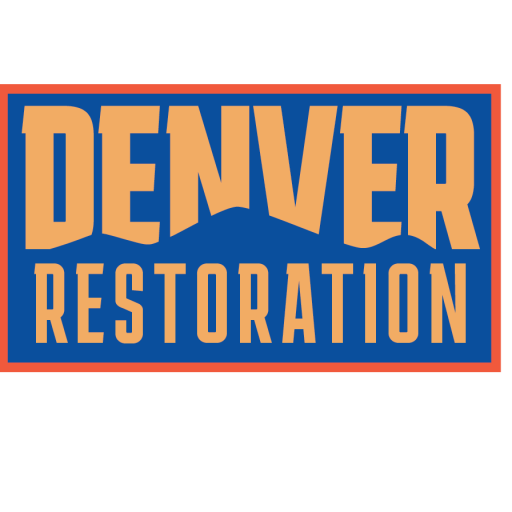Understanding Storm Damage and Avenues for Restoration
When a storm hits, the aftermath can be devastating. Homes and businesses can be severely damaged or even destroyed, leaving property owners feeling overwhelmed and helpless. However, it is essential to know that property restoration is not only possible but also highly achievable. With the right knowledge and resources, the process of storm damage restoration can be managed effectively, restoring a semblance of normalcy in a somewhat chaotic situation.
Detailed Damage Assessment: An Essential First Step
A thorough damage assessment is the first critical step in property restoration. This involves identifying and documenting every aspect of the storm’s impact on your property. From water damage in the basement to the fire damage incurred by lightning strikes, a comprehensive evaluation is crucial for formulating an effective recovery plan.
Remember, damage assessment is not just about visual evaluation. Professionals often deploy advanced equipment like infrared cameras to detect hidden water damage and drones for a comprehensive rooftop inspection. They also consider potential environmental and health safety concerns and comply with insurance and legal requirements during the damage estimation phase.
For instance, the Coastal Resilience Program, spearheaded by the U.S. Army Corps of Engineers provides extensive information about coastal storm damage assessment and recovery initiatives. By learning from such resources, you can better understand how to approach your restoration journey.
Restoration Techniques: Bringing Your Property Back to Life
Once the damage has been assessed, it’s time to roll up your sleeves and begin the restoration process. Here, the utilization of state-of-the-art restoration techniques and equipment are essential. From water extraction to mold remediation and structural drying, each process requires a unique approach and expertise.
In case of water damage, expedite the drying process to prevent mold formation and structural issues like rotting wood. A professional restoration company can guide you through this, ensuring that every corner of your property is brought back to pre-storm conditions. For more insights into handling water damage, you can refer to our guide on Denver’s Guide to Water Damage Recovery.
For fire damage, the focus shifts to smoke and soot removal, deodorization, and surface cleaning. Depending on the severity of the fire, structural repairs might also be needed. Remember that smoke damage can be as harmful as the fire itself, so ensure a thorough cleansing before you move back in.
Insurance and Legal Compliance: Safeguarding Your Interests
Ensuring you’re covered from a financial perspective is equally important during the restoration process. Make sure to understand your policy terms and work with your insurance provider to secure coverage for the restoration costs. Furthermore, ensure that all restoration activities are compliant with local building codes and regulations.
Effective Customer Communication and Crisis Management
The aftermath of a storm can be incredibly stressful for property owners, making effective communication critical. Keeping the lines of communication open can make a significant difference in managing the crisis. Whether it’s liaising with insurance companies or coordinating with restoration experts, transparent and regular updates can alleviate stress and uncertainty.
Building Resilience Against Future Storms
While dealing with the immediate fallout from a storm is crucial, it’s also important to think about the future. Adopting resilience measures can help protect your property from future disasters. This can include measures like installing flood barriers or retrofitting buildings to withstand high winds.
Our guide, Empowering Denver Homeowners: Safeguard Against Flood Risks, provides useful insights into this subject.
Additionally, you can look into programs like ReBuild NC which offer resources to help individuals and communities recover and become more resilient in the face of future storms.
Ultimately, it’s about understanding that while storms may be inevitable, the destruction they cause isn’t. With knowledge, preparation, and resilience, we can weather any storm and come out stronger.
Why Professional Help Matters
In the face of storm damage, it may seem tempting to tackle restoration on your own. However, it is crucial to remember that storm damage restoration is a specialized process, and professionals are trained to handle all the complexities involved. A professional restoration company will not only have the proper equipment but also the relevant experience and knowledge to tackle different types of damage effectively.
Working with professionals also ensures efficient and timely completion of the restoration process. They follow a systematic approach to restoration, ensuring nothing gets overlooked. In addition, they adhere to strict safety protocols, ensuring your property is safe for habitation.
Post-Restoration Clean-Up
Once the primary restoration is complete, a thorough cleaning of the property is necessary to make it livable again. Post-restoration clean-up involves the removal of excess water, debris, or dirt left over from the restoration process. This also includes the disinfection of surfaces to eliminate potential health risks.
Whether you need to clean after water damage or need help removing soot and smoke residue after a fire, a professional restoration company can assist. Remember, the goal is not just to restore your property to its pre-storm condition but also to make it safe and comfortable for its inhabitants.
The Emotional Toll of Storm Damage
Restoring a property after a storm is not only a physical endeavor but an emotional one as well. The process can be stressful and taxing, especially when dealing with insurance claims and tough financial decisions. It’s necessary to acknowledge the emotional challenges that accompany the restoration process.
Having a clear line of communication with your restoration company can help manage these challenges. Their expertise and guidance can alleviate stress and provide the reassurance that the path to recovery is well in hand.
Available Resources and Reimbursement Programs
It’s essential to remember that property owners are not alone in dealing with storm damage. There are several resources and programs available to help property owners navigate their path to recovery.
For example, programs such as Florida’s Hurricane Restoration Reimbursement Grant Program provide financial assistance to homeowners for storm damage restoration. Similarly, the Palm Beach County Home Resiliency Funding Program offers resources and financial aid to help homeowners make their homes more resilient to future storms.
Identifying and Rectifying Secondary Damages
After recovering from the immediate impact of storm damage, it’s essential to watch out for secondary damages. These could arise from mold growth due to remaining moisture, structural weaknesses from water damage, or electrical issues from fire damage. Identifying these issues early can prevent further damage and costly repairs down the line.
Embracing a Mindset Shift: From Reaction to Prevention
While immediate recovery is the primary focus in the aftermath of a storm, it’s equally vital to shift focus towards storm damage prevention. Proactive measures such as regular property maintenance, investing in storm-resistant structures, and installing early warning systems can help mitigate the impact of future storms.
Mold Damage: A Common Aftermath of Storms
One of the most common after-effects of storm damage is mold infestation. Moisture from flooding or water damage can create the perfect breeding ground for mold spores, leading to health risks and structural damage if left untreated.
You can refer to our guide on Denver’s Guide to Mold Remediation for dealing with mold effectively.
The Role of Technology in Storm Damage Restoration
Technological advances have revolutionized the storm damage restoration process. The use of advanced equipment and techniques, including moisture meters, thermal imaging cameras, and professional-grade dehumidifiers, has made the restoration process more efficient and effective.
Conclusion
Dealing with storm damage can be overwhelming, but with the right knowledge and resources, it can be managed effectively. Whether it’s undertaking a thorough damage assessment, understanding your insurance coverage, or seeking professional restoration help, each step takes you closer to restoring your property to its pre-storm state.
Remember, storm damage restoration is not just about recovery but also about building resilience for the future. By understanding that storms are inevitable, but their destruction isn’t, we can equip ourselves better to face any storm and emerge stronger.

